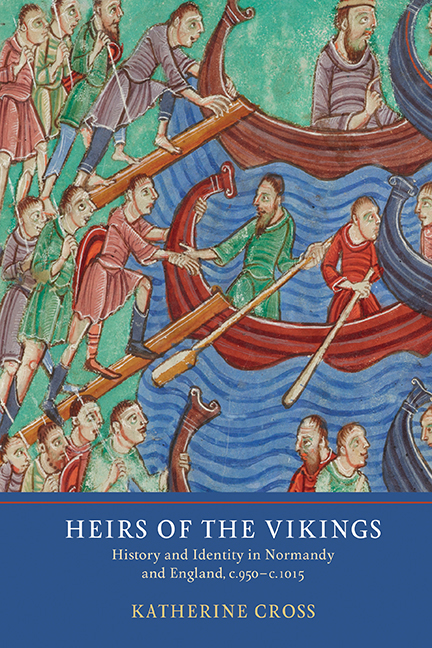Book contents
- Frontmatter
- Dedication
- Contents
- List of illustrations
- Acknowledgements
- Abbreviations
- Note on terminology
- Map
- Introduction: The Problem of Viking Identity
- 1 Genealogy: Building a Viking Age Dynasty
- 2 Origin Myths: A People for a Dynasty
- 3 Hagiography I: Ruin and Restoration
- 4 Hagiography II: Saintly Patronage
- 5 Charter Narratives: Normans, Northumbrians and Northmen
- Conclusion: Viking Age Narratives and Ethnic Identities
- Appendix 1 The Date of Fulbert's Vita Romani
- Appendix 2 The Dates of the Latin Vita Prima Sancti Neoti and the Old English Life of St Neot
- Bibliography
- Index
4 - Hagiography II: Saintly Patronage
Published online by Cambridge University Press: 19 July 2019
- Frontmatter
- Dedication
- Contents
- List of illustrations
- Acknowledgements
- Abbreviations
- Note on terminology
- Map
- Introduction: The Problem of Viking Identity
- 1 Genealogy: Building a Viking Age Dynasty
- 2 Origin Myths: A People for a Dynasty
- 3 Hagiography I: Ruin and Restoration
- 4 Hagiography II: Saintly Patronage
- 5 Charter Narratives: Normans, Northumbrians and Northmen
- Conclusion: Viking Age Narratives and Ethnic Identities
- Appendix 1 The Date of Fulbert's Vita Romani
- Appendix 2 The Dates of the Latin Vita Prima Sancti Neoti and the Old English Life of St Neot
- Bibliography
- Index
Summary
Norman dukes and English kings not only influenced hagiographical narratives, but on occasion acted as protagonists within them, interacting directly with the saints. In the hagiographies examined in this chapter, the bonds between rulers and saints are in each case made explicit and central to the narrative. The Fécamp Chronicle and the Vita Romani, discussed in the previous chapter, both used prophecies and visions to connect past and present to the crucial moment of viking invasion. In the texts discussed here, the device of saintly visions was used to even more direct effect. Two Translationes Sancti Audoeni, composed in early eleventh-century Normandy, defined the relationship of Rouen's patron saint with the ducal dynasty – a reciprocal relationship, in that the saint demanded devotion from his ducal patrons through posthumous interactions. In tenth- and eleventh-century England, two similar narratives related the appearance of saints Cuthbert and Neot to King Alfred, leading to his victory in battle over the Danes, and thus placed the West Saxon dynasty in these saints’ debt. The Latin Vita Prima Sancti Neoti and the Old English Life of St Neot reflect the influence of the West Saxon dynasty in eastern and south-western England, respectively; the Historia de Sancto Cuthberto presents the dynasty's more gradual establishment of authority in the north. In all three cases, a narrative of personal relationship between saint and ruling dynasty reinforced a dominant perspective on the viking past. Moreover, these vision narratives presented the partnership between ecclesiastical institution (and, by extension, divine approval) and secular power as forged in that viking past.
It emerges that English kings and Norman dukes used saints’ cults to establish their authority in comparable ways. Both presented their dynasties as the special devotees of existing cults, and at the same time associated those cults with narratives of the viking past. These similar strategies raise the question of how viking rulers in England interacted with ecclesiastical institutions and saints’ cults and so, after analysing these texts, I turn to the slight evidence for such interactions. Courting saintly patronage was clearly a successful strategy for secular rulers in promoting their own ideological agendas, and hagiographical narrative provided a means for shaping the recent past to support their authority.
- Type
- Chapter
- Information
- Heirs of the VikingsHistory and Identity in Normandy and England, c.950–c.1015, pp. 123 - 154Publisher: Boydell & BrewerPrint publication year: 2018

